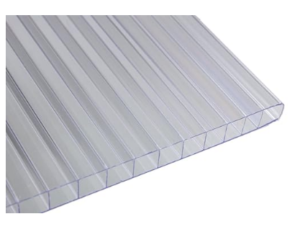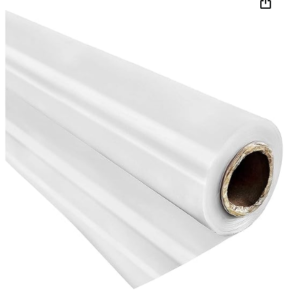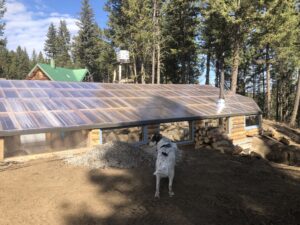I consider my greenhouse to be much more than just a structure in my backyard; it’s a crucial environment for cultivating plants year-round. The material I choose for its roof has a significant impact on everything from temperature control to how much light my plants receive. In this piece, I’ll explain why selecting the right roofing is vital for any greenhouse enthusiast.
First, it’s important to acknowledge that the top layer of your greenhouse serves multiple roles. Beyond protection from the elements, it regulates the internal climate. Plants require specific conditions to thrive, and the right roofing material can ensure that these conditions are met. Poor roofing choices lead to subpar plant growth, higher energy costs, and a possible need for premature replacements.
Understanding the balance between insulation, light transmission, and durability is key. Too much insulation can deprive your plants of light, while too little may overexpose them and result in temperature fluctuations. Roofing must be durable to withstand external conditions while being efficient at passing the right amount of light into your greenhouse. The choices you make here resonate through every aspect of greenhouse maintenance and productivity.
Top Greenhouse Roofing Materials: An In-depth Comparison
When I contemplate the heart of a greenhouse, I can’t help but consider its roof. It’s more than just a shelter; it’s a critical factor in a plant’s life. In this section, I’ll guide you through the prime choices available: polycarbonate sheets, plastic, and glass. Each of these materials boasts unique properties that cater to different greenhouse needs, and my aim is to equip you with the knowledge to make the best decision for your horticultural haven.
First up, polycarbonate sheets. Think of this as the middle ground between flexibility and durability. They are known for their resilience to harsh weather and their ability to provide uniform light diffusion which is key for plant growth. Not to overlook, these sheets come with the perk of UV protection, guarding your plants from the harsher side of sunlight.

Falken Design Falkenacrylic-MW-CL-6MM/2436 Mw-CL-6mm/2436 Multiwall Polycarbonate Sheet, Greenhouse Cover, 6mm (0.236″) 24″ x 36″ – Clear, Polycarbonate
Next, the plastic roofing. The word ‘plastic’ may trigger thoughts of fragility, but in the realm of greenhouses, it’s synonymous with adaptability. Lightweight and easy to install, plastic sheets are rebels in their own right. They challenge the status quo by being cost-effective without compromising on the light transmission that’s essential for your greenhouse to flourish.

VEVOR Greenhouse Film 24 x 50 ft, Greenhouse Polyethylene Film 6 Mil Thickness, Greenhouse Plastic Greenhouse Clear Plastic Film UV Resistant, Polyethylene Film Keep Warming, Superior Strength
Let’s not forget the timeless option: glass. Classic and elegant, glass roofs have graced the top of greenhouses for centuries. Opting for glass is an investment in aesthetics as well as longevity. Highlight transmission is a given, creating a natural environment for plants to thrive. However, it’s a delicate material that demands careful handling and maintenance.
Each option has its champions and its critics. As we move on, I’ll lay out the pros and cons of polycarbonate sheets, plastic, and glass in detail. My objective isn’t to sell you on one over the other, but to present the facts so YOU can determine which material aligns with your greenhouse goals.

Daylighting Plate Clear Roof Sheet Glass Fibre Resin Panels
Comparing Pros and Cons of Each Roofing Material to Make an Informed Decision
I understand it’s essential to make an informed choice when it comes to selecting roofing for your greenhouse. Each material, be it polycarbonate sheets, plastic, or glass, has its own set of pros and cons that can significantly affect your greenhouse’s performance.
Polycarbonate sheets are applauded for their strength and ability to insulate while still allowing through that much-needed light. However, they can yellow over time and may require a higher initial investment.
Plastic, on the other hand, is cost-effective and easy to replace. But its lower durability compared to polycarbonate sheets means it might not be the wisest long-term option.
Glass is unbeatable for its timeless look and optimal light transmission. Yet, its higher cost and fragility could raise concerns for some greenhouse owners.
Your choice will hinge on weighing these factors against your greenhouse demands, climate conditions, and budget. Reflect on what your plants need most and how much maintenance you can manage.
Ultimately, the decision rests in your hands. Take this comparison I’ve provided, measure it against your requirements, and you’ll find the roofing material that not just meets, but exceeds your greenhouse expectations.
You might also like to check out Greenhouse Roof Idea
Here is a nice polycarbonate greenhouse

Outsunny 10′ x 6′ x 6.4′ Walk-in Garden Greenhouse Polycarbonate Panels Plants Flower Growth Shed Cold Frame Outdoor Portable Warm House Aluminum Frame
In the end we went with the Polycarbonate Panels

#greenhouse #offgridliving #offgridcabin #greenhousegrowing
© 2024, Teresa. All rights reserved.


Teresa,
I have been remodeling the greenhouse that was on the property I bought a couple of years ago. This has been a project that I have had to put off for those unexpected emergencies that pop up. But this year is the year. I was just looking at the roof and it is not in good condition.
Your review of the top greenhouse roof materials was very enlightening. I feel that I can make an informed decision. Being in sunny Colorado, I think I will use the Falken Design Falkenacrylic Multiwall Polycarbonate Sheet, Greenhouse Cover. I like the multi-layer design, I feel that it will be a requirement for filtering the strong Colorado sunshine and holding the heat in longer at night.
Thanks for helping with this important decision easier.
Stacie